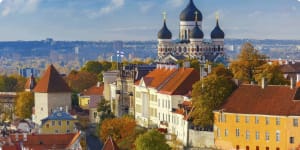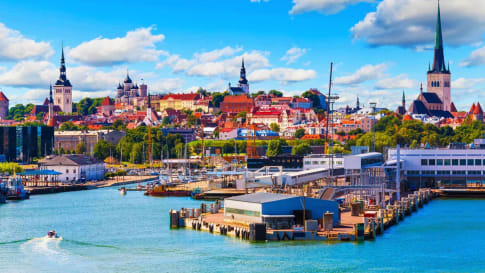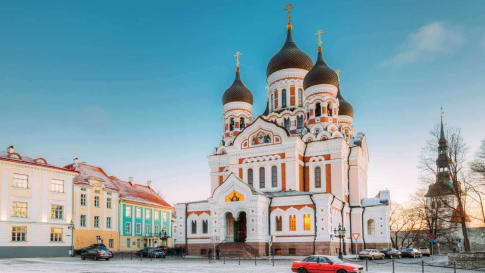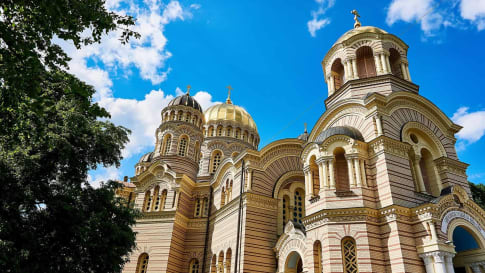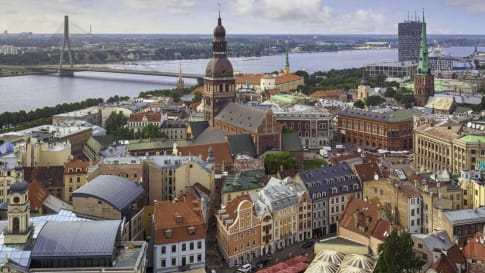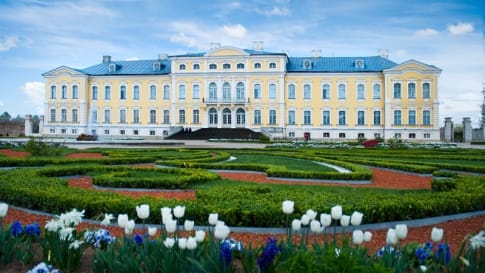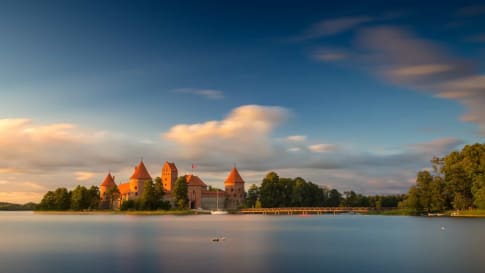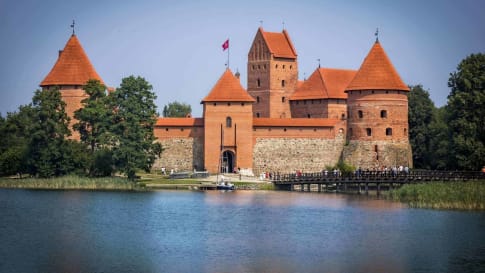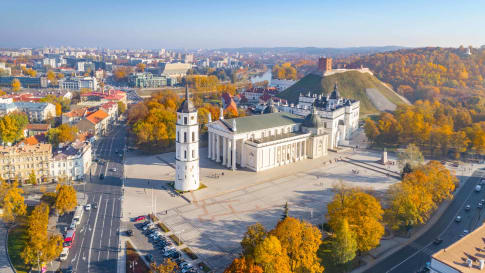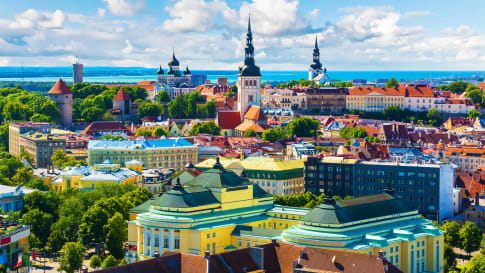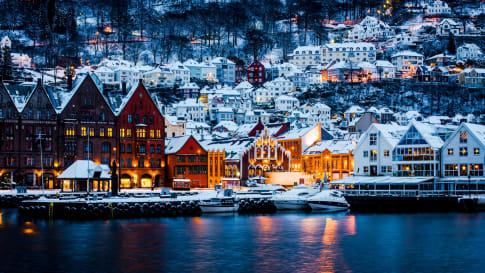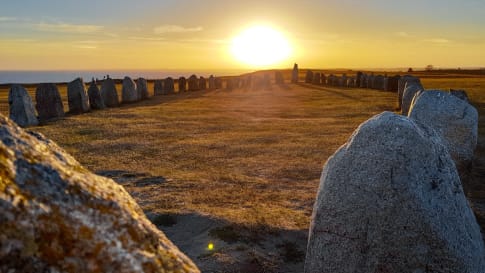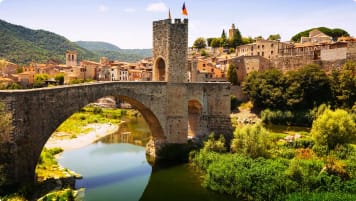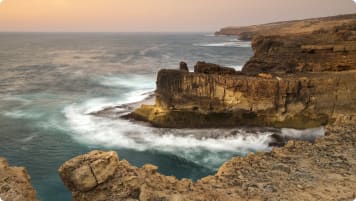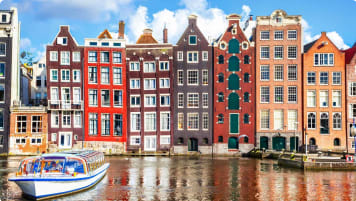Baltics Small Group Escorted Tour: Latvia, Estonia, Lithuania, Stockholm
An escorted small group tour to the Baltic States of Europe that explores the key destinations of this region starting in Warsaw, then making its way through Poland, Estonia, Latvia, Lithuania, Finland, Stockholm and concluding in Copenhagen. Each day has scheduled itineraries supported by local guides who share knowledge and authentic experiences of the places visited. This is small group travelling to the Baltics for like minded people.
From A$16,975AUD
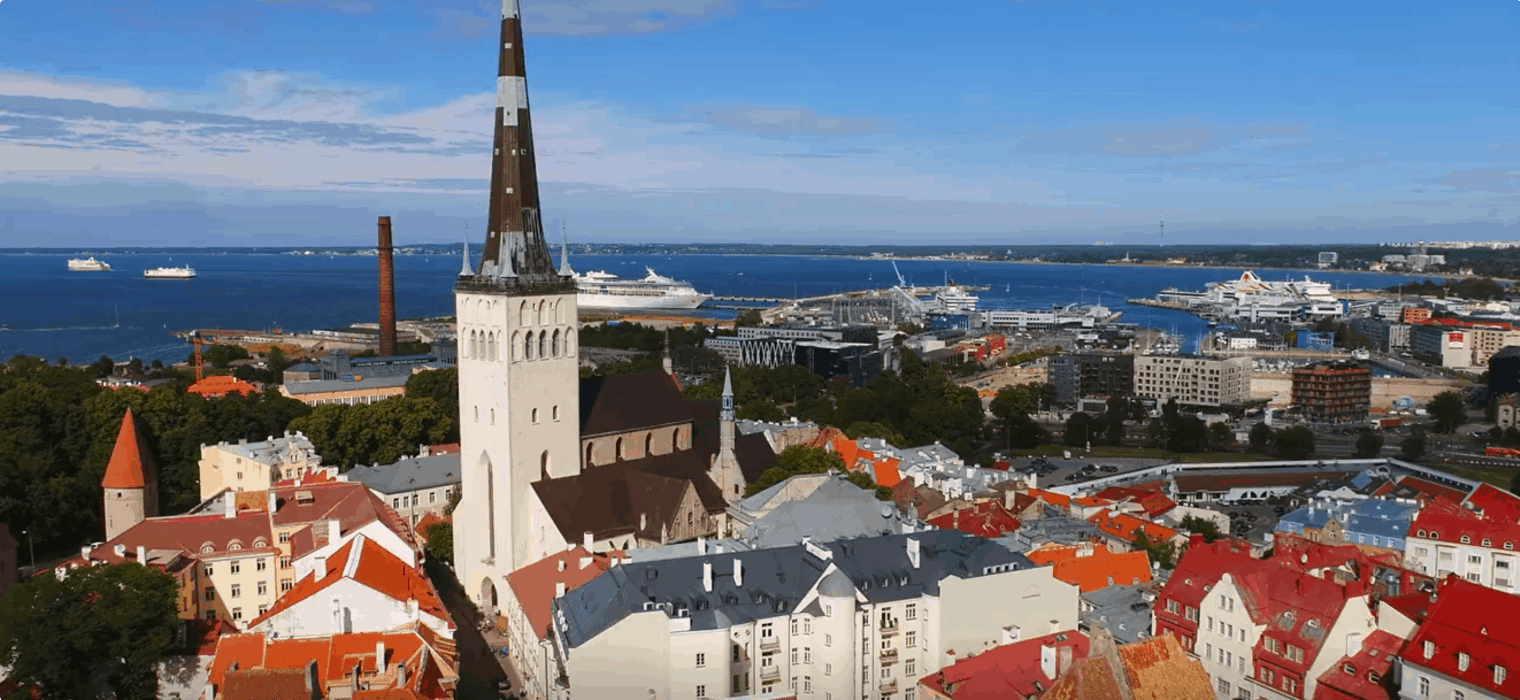
Highlights
- 1. Explore the historc old town of Tallinn, Estonia, an exceptionally complete and well-preserved medieval northern European trading city, a UNESCO World Heritage site due to it
- 2. Visit Stockholm and explore Gamla Stan, one of the largest and best preserved medieval city centres in Europe.
- 3. In Vilnius, view the remnants of the Communist era including the KGB museum.
- 4. Take in Riga's remarkable Old Town (Vecrīga) vibrant atmosphere. Also a UNESCO World Heritage site.
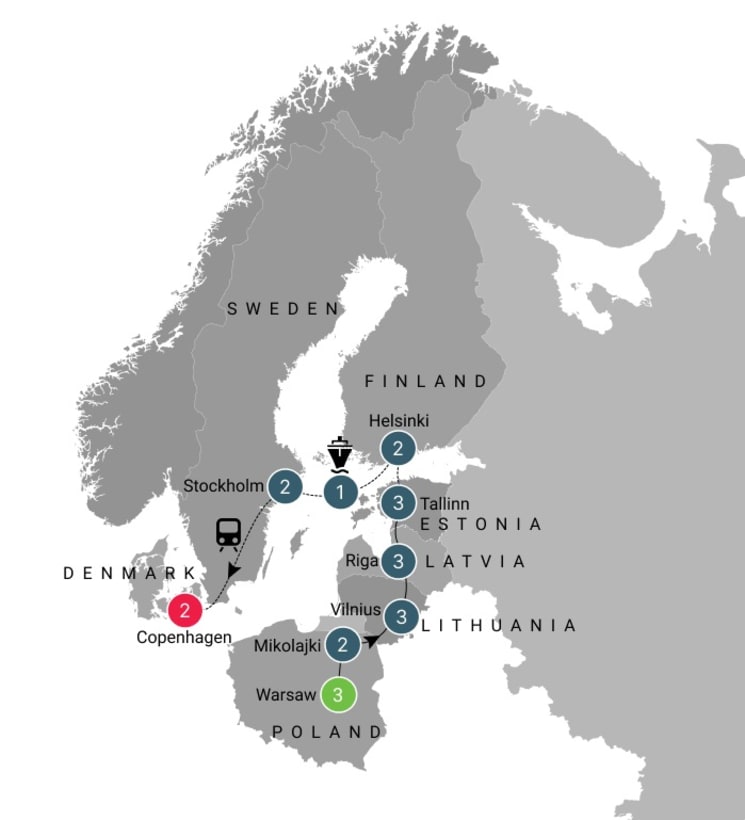
Departure Dates
| Departure Date | Price |
|---|---|
| 02 May 2025 Ends 22 May 2025 • 21 days A$16,975 Twin A$19,195 Single Guaranteed | Selected |
| 01 October 2025 Ends 21 October 2025 • 21 days A$16,975 Twin A$19,195 Single Available | |
| 01 May 2026 Ends 21 May 2026 • 21 days A$16,975 Twin A$19,195 Single Available | |
| 30 September 2026 Ends 20 October 2026 • 21 days A$16,975 Twin A$19,195 Single Available |
Small Group Tour of the Baltic states
This Baltic small group tour for senior and mature travellers examines how Latvia, Estonia, and Lithuania have developed historically and culturally since the 1980s. The Baltic tours group formed for each guided tour is typically made up of senior travellers, be they couples or solo travellers who are interested in learning as they explore the Baltic countries. The adoption of change and integration into Europe and Scandinavia has been an important transition. This small group tourexplores the way our destinations flex their economic muscles, continuing to become a focus of interest for the rest of the world. The fall of the Berlin Wall and the subsequent reunification of Germany bound the region into the engine of the European economy. Rarely, though, have any places been comprised of so many differing ideologies, peoples, and languages: German, Polish, Russian, Lithuanian, Latvian, Estonian, and Finnish. It is this diversity that makes the Baltic nations small group tour so fascinating.
Baltics Small Group Tour Itinerary & Highlights
The Baltic small group escorted tour explores the diverse histories of the Baltic countries, and influences on, the countries that make up the Baltic state. During this fully escorted tour you study how each of the Baltic republics is making the most of its different form of independence. This group tour with a tour leader covers the history of the Baltic region, seeking to show how it has developed since the 1980s. We also recognise the events and significant places associated with the Second World War and the Baltic nation relationship with the former Soviet union and Moscow. We visit many significant places following the seaboard of Northern Europe that contributes to our overall understanding of world history in the last century.
We stop in 8 places and 7 countries over the 21 days. We travel through Poland , Latvia , Estonia , Lithuania, Finland, Sweden and Denmark. This Baltic tours group has some 16 days on a escorted tour with local guides who share their knowledge of each of our destinations with the group often as part of a managed walking tour through the cobbled streets of the old town of the Baltic capitals and significant places along our way.
Poland
Poland lies at the heart of the European continent, between Western and Eastern Europe, and because of that, the country’s history is full of wars, invasions, occupations, partitions, and ever-changing borders. They finally gained independence in 1991 after the collapse of the Soviet Union and was the first post-communist country to reach its pre-1989 GDP levels thanks to a booming economy. Memories of the turbulent history are visible all over the country, but Poland also made great efforts to preserve and restore its monuments. Our tour takes us to Warsaw and its Old Town, which is listed as a UNESCO World Heritage Site thanks to its unique architectural style.
Lithuania
Melding pristine nature and historic cities, Lithuania is a nation with a truly unique history and culture. The Baltics region has always been a clash zone between Russia, Western Europe and Scandinavia, and the country often struggled to maintain its independence. Finally being able to leave the Soviet Union in 1991, the country successfully converted to a market economy, joined the EU and the Schengen Area and adopted the Euro as its currency. The capital city, Vilnius, is a baroque masterpiece, dotted with churches and cathedrals, while the power of medieval Lithuania is tangible at the looming Trakai Castle. And Lithuania is also a natural wonderland, home to pristine beaches on the Baltic coastline and a lakeland seemingly designed for summer boating, kayaking, and berrying, and we’ll be able to see the best of the country during the next leg of our trip, as we stay in Vilnius and make daytrips to nearby attractions and monuments.
Latvia
Latvia is one of Europe’s hidden gems, despite the fact that the history of the country has been one of centuries of foreign rule, invaded by Germany, Denmark, Sweden, Poland-Lithuania and Russia through the years. Latvia finally declared its independence in 1991 (just as all the other Baltic countries) and been on the rise since then, successfully converting to a market economy, and joining the EU to strengthen their Western ties rather than Russians. We pause in Latvia in the second of the Baltic capitals, Riga. The capital city, Riga has a cosmopolitan atmosphere with a distinct and well-preserved historic quarter. It is home to architectural jewels both medieval and modern, including the 13th century RigaCathedral and the world’s most extensive collection of Art Nouveau architecture, and we all get to see it often on a walking tour with a local guide through the old town as we continue to make our way North. Outside the capital, Latviacan claim some of Europe’s most pristine landscapes, including dense forests contrasted with beautiful sandy beaches.
Estonia
Estonia is often labelled as the ‘most Scandinavian’ Baltic state as it is the northernmost and culturally the closest to Sweden, Norway, Denmark and Finland. It is also the smallest of the three Baltic republics, but it embraced modern times the best: faced with the struggle of adapting economically after the fall of the Soviet Union, Estonian leaders saw the fledgling internet as an opportunity for a small country to make a mark, and put considerable resources into getting Estonia online. The country became a tech hot spot when Skype was invented here, and anyone can become an e-resident of the country to found a 100% paperless e-company within minutes. The capital, Tallinn itself will take visitors on an amazing journey through time: the Old Town with its castles, domes and spires mixing with cafés, restaurants and start-up hubs, and we’ll have plenty of time to explore this blend.
Finland
Influenced by Russia and Scandinavia, yet maintaining its own distinct culture, Finland is one of Europe’s most intriguing countries though sits outside the Baltic tour. Even though they’re sharing 700 years of history with Sweden, Finns often pride themselves in not being Scandinavian due to their different origins, and most notably, their distinctively different language that is only one of the 6 in Europe not part of the Indo-European language family. They are also the only Nordic country to join the Euro zone. After World War 2 Finland managed to maintain its independence and have a market economy despite some very strong ties to the Soviet Union, and achieved rapid growth, building one of the most extensive welfare states. Finnish education is also world-famous and often cited as a role model by other countries. The capital, Helsinki, is a showcase for architecture both old and new. Under the Russian rule, it was built in a neoclassical style, modelled off the then Russian capital, St. Petersburg. At the turn of the 20th century, Finnish architects inspired by the nationalist movement designed in art nouveau style, incorporating influences from Finnish folklore and nature into the ornate style. And we’ll spend a day exploring the best of this mix.
Sweden
A captivating Nordic country with a rich history and stunning natural landscapes, Sweden shares a special relationship with the Baltic states. Situated on the eastern coast of the Scandinavian Peninsula, Sweden's close proximity to the Baltic Sea has fostered centuries of cultural, economic, and political connections with its Baltic neighbors. From ancient trade routes to modern-day collaborations, its relationship with the Baltic states has shaped the region's development, creating a unique blend of shared traditions, mutual influences, and an enduring bond. During the medieval period, Sweden played a significant role in the Baltic region through the powerful Hanseatic League, a trading alliance of Northern European cities, including several Baltic ports, established a strong economic presence in the area. In terms of political influence, during the Swedish Empire in the 17th and 18th centuries, Sweden expanded its territories to include parts of present-day Estonia and Latvia and this era left a lasting impact on the region, with traces of Swedish influence still visible in architecture, culture, and local traditions. More recently, Sweden has played a supportive role in the Baltic states' pursuit of independence. When Estonia, Latvia, and Lithuania declared their independence from the Soviet Union in 1991, Sweden was among the first countries to recognize their sovereignty and actively support their integration into the European Union and NATO.
Denmark
Situated on the Jutland Peninsula and numerous islands, Denmark shares a significant connection with the Baltic states, since it's located just across the Baltic Sea. Danish merchants and traders have long ventured across the Baltic sea, establishing important commercial links with cities like Tallinn, Riga, and Vilnius. These connections have fostered the exchange of goods, ideas, and cultural influences between Denmark and the Baltics. Additionally, the Kingdom of Denmark has had historical territorial claims and political alliances with certain Baltic states. For instance, during the medieval era, Denmark ruled over parts of Estonia, leaving a lasting impact on the region's architecture, governance, and cultural heritage and in more recent times, Denmark has been a steadfast supporter of the Baltic states' independence and their integration into the European Union and NATO.
If you're interested in learning more about the Baltics and this classic Baltic tour, we prepared a Baltics State Guide, and the article on their history. You can learn more about each country this tour visit with our profiles: Germany, Poland, Latvia, Estonia, Lithuania, Finland and Sweden.
For more details about this Odyssey Traveller tour, click the ‘Top 5’ or ‘Itinerary’ buttons above! If you’re keen to experience this tour, please call or send an email. Or, to book, simply fill in the form on the right hand side of this page.
Gallery



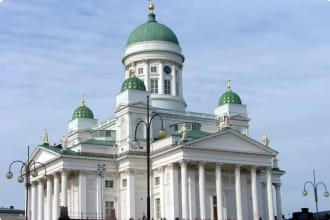

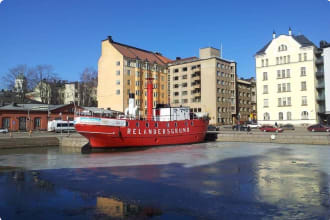
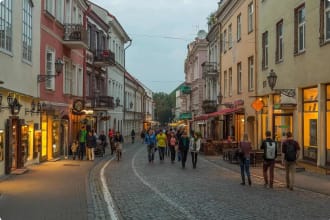

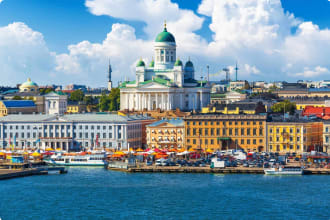
Itinerary
21 days
Day 1: Warsaw
Accommodation: 3 nights at Hotel Mercure Warsawa Centrum or similar
Upon arrival in Warsaw, make your own way to the group hotel. If arriving early in the day, there will be an opportunity to enjoy a walk around the area with your Odyssey program leader before the tour briefing at the hotel and welcome dinner.
(D)
Day 2: Warsaw
Accommodation: Hotel Mercure Warsawa Centrum or similar
Poland has long suffered from the vicissitudes of war as its geographical location on the flat northern European Plain means that it has acted as a thoroughfare for great armies of Europe. From Swedish invasions to the north, to Napoleonic armies from the west, the Grand Duchy, and later Kingdom of Poland, never benefited from great periods of peace. The latest occupation by the Soviets followed an almost complete destruction of the city of Warsaw by bombing raids. It took the efforts of Solidarity to commence the removal of the Soviet forces from Polish territory. Warsaw, therefore, is a completely reconstructed city rebuilt from medieval plans and follows the painstaking paintings of the Italian artist Canaletto.
We explore the city on a full day tour with a local guide. We will visit the mains sightsof the city, including the Palace of Culture and Science, a gift to the city from Stalin. During De-Stalinisation in the 1950s, after the dictator’s death, any reference to Stalin (including his name in the title) was removed from the building. We take time to visit the Warsaw Uprising Museum that focuses on events of 1944, followed by a trip to the regal Wilanow palace and gardens.
The remainder of the day is at leisure for you to explore on your own.
(B)
Day 3: Warsaw
Accommodation: Hotel Mercure Warsawa Centrum or similar
For our third day in Warsaw we will first travel to the Royal Castle, a shell of a building made from contributions from the Polish people around the world, which stands in contrast to the the Wilanow palace viewed the day before. We will then visit the Chopin Museum and learn about Poland’s greatest cultural hero, the composer Chopin. We return to our hotel and enjoy some free time.
In the evening we enjoy a recital of his most famous works a the Archidiocese museum, which will offer a unique insight into Poland’s cultural history.
(B)
Day 4: Mikolajki
Accommodation: 2 nights at Amax Boutique Hotel or similar
As we journey across Poland to the Baltic states, we stop along the way to view historical sites and natural wonders of regional Poland. The first stop is at the Treblinka memorial, on the site of the infamous concentration camp. We then travel to the Polish lake district to the very pretty town of Mikolajki. We take a cruise around the the lake. Tonight, we enjoy a group dinner at our hotel. Mikolajki is a very small place, but it is beautiful and the perfect place for a pleasant stroll.
(B,D)
Day 5: Mikolajki
Accommodation: Amax Boutique Hotel or similar
Now an excursion in the area, first to the marvellous baroque church at Swieta Lipka – the interior is astonishing. Additionally, the Roman Catholic church was an important part of the people’s resistance to communism. Then, in the afternoon we continue to Ketryzn and a trip to the infamous Wolf’s Lair. Now a collection of ruins hidden away in the forest, Hitler spent more time here than in Germany during WWII.
(B)
Day 6: Vilnius
Accommodation: 3 nights at the Novotel Vilnius or similar
We continue our journey across the countryside to Vilnius. We make a couple of stops to break the journey. One of these stops today is at the Grutas park – it has lots of old Soviet era statues and other memorabilia. The owner made his fortune in the post-Soviet era, but wanted to create something to remind people of the repressive past.
We arrive in Vilnius in time for dinner.
(B,D)
Day 7: Vilnius
Accommodation: Novotel Vilnius or similar.
Lithuania is the southernmost Baltic state and in some ways the most vibrant. Along with its neighbour, Poland, it once shared an empire stretching to the Black Sea. Like Poland, it harnessed the devout faith in Roman Catholicism to strive for independence from the Soviet Union. Vilnius is the historic and lively capital of Lithuania and is often regarded as the greenest of the Baltic capitals. It has winding medieval streets and many fine Baroque and classical buildings.
We will learn about Lithuania’s history and culture, as well as its economic and political situation, with an introductory lecture on the country and its capital. We take time out to stand on the Stebuklas (Miracle) paving slab near the cathedral – this site marks the end of a two million person, hand-to-hand human chain that spanned 650 km, from Tallinn to Vilnius. This remarkable event took place in 1989, and represented the locals’ protest for their freedom from the Soviet Union. We will follow up with a visit to Vilnius’s Museum of Occupations and Freedom Fights, to further understand the country’s fascinating but complex relationship with its own past. We will then head out of the city center, and sample Lithuania’s rich heritage with a guided tour of the 13th century castle of Trakai.
(B)
Day 8: Vilnius
Accommodation: Novotel Vilnius or similar.
We will take a full day tour of Kaunas, the country’s second-largest city and an important cultural and historical hub. Kaunas is the former Lithuanian capital (founded in the 13th century) and it is often considered to be more “Lithuanian” than Vilnius.
Here we meet our local guide for a tour of the city and visit the Ninth Fort Museum, situated on the outskirts of the city and stands as a somber reminder of the atrocities committed during World War II and the subsequent Soviet occupation. The fort itself was originally built in the late 19th century as part of the Kaunas Fortress, which served as a defensive structure for the Russian Empire. However, its history took a dark turn during the Nazi occupation. The museum, serves as a memorial and a tribute to the victims of this horrific era.
(B)
Day 9: Riga
Accommodation: 3 nights at Radisson Blu Elizabete Hotel or similar.
En route to Riga, we will stop off at the Hill of the Crosses in Sauliai. We then cross over into Latvia, where our first stop will be a guided tour of the fine 18th century Baroque Palace of Rundale and its famous gardens. From Rundale we head straight to Riga. Latvia lacks Estonia’s close proximity to Western Europe, and Lithuania’s fame achieved on its path to independence. But Riga has always been the Baltic States’ major metropolis. In lieu of the picture postcard appeal of Tallinn or Vilnius, it has a distinctive cosmopolitan atmosphere, and a well-preserved Historic Quarter. During the 1930s, the city was the West’s major post for listening in to “the Russian Bear” to the east. It was a thrumming mix of diplomats, traders and intrigues, earning it the accolade, “the Paris of the East.” Later, we enjoy dinner at the hotel.
(B,D)
Day 10: Riga
Accommodation: Radisson Blu Elizabete Hotel or similar.
In the morning we will visit some of Riga’s most iconic sites with our local guide. We will see the facade of the Blackheads House, a 14th century guild hall which was recently renovated, before visiting St. Peter’s church and the iconic Cathedral followed by viewing some of the many Art Nouveau buildings and visit to the Art Nouveau museum, which offers some context to Riga’s iconic architecture, most of which dates to the decade before world war one.
The remainder of the afternoon and evening is at leisure for you to continue to explore the city at your own pace.
(B)
Day 11: Riga
Accommodation: Radisson Blu Elizabete Hotel or similar.
Today we spend the day outside Riga with a local guide.
We first make our way to Kemeri National Park for a walk along the Great Kemeri Bog Boardwalk and view a world of moss, small pine trees, deep pools. We will then visit the Baltic Sea resort of Jurmala, where we will have lunch at a local restaurant and a guided tour of the city, before returning to Riga in the evening.
(B,L)
Day 12: Tallinn
Accommodation: 3 nights at Radisson Blue Olympia or similar.
Today we travel onto to Tallinn, the capital of Estonia. En route, we visit Sigulda Castle and Turaida castle (one of the oldest in Latvia), before heading on to Tallinn.
We arrive late afternoon and have dinner together at the hotel.
(B,D)
Day 13: Tallinn
Accommodation: Radisson Blue Olympia or similar.
This morning, we learn about Estonia’s history and culture, as well as its economic and political situation, with an introductory lecture on the country and its capital. Estonia is the most northerly of the three Baltic States, and the most Scandinavian in atmosphere. Ethnically, the Estonians and Finns are cousins, and with Estonia just 80 kilometres across the Gulf of Finland from Helsinki, the country is creeping socially and economically closer week by week to the western-style economy of Finland. Tallinn has an aura of the 14th and 15th centuries, with its jumble of medieval walls and turrets, spires, and winding cobbled streets.
We will experience the history and architecture of Tallinn with a guided walk of the city. Our walking tour includes a visit to the Dome Cathedral, views of the Town Hall, and St. Nevsky Russian Cathedral. We also benefit from a fascinating insight into the rural economy of Estonia, with a visit to the open-air Estonian museum.
(B)
Day 14: Tallinn
Accommodation: Raddisson Blu Olympia or similar.
Today is your opportunity to relax and explore at your own pace, there are no group activities planned.
(B)
Day 15: Helsinki
Accommodation: 2 nights at Original Sokos Hotel Presidentti Helsinki or similar
Finland is a large country with friendly people, pristine nature, and interesting culture. It is usually considered a Scandinavian country, a categorisation based on geographic proximity that ignores Finland’s unique character. Finland has shared almost 700 years of history with Sweden, but the Russian tradition has also been a strong influence in the East. The Finns have one of the longest traceable tenancies and have stubbornly resisted servitude or eviction. However, the blooming of Finnish nationalism was late and delicate. Helsinki is a small and intimate city with buildings designed by C. L. Engel, who had been responsible for much of the work in St. Petersburg.
We depart after breakfast and travel to Helsinki by ferry. On arrival we’ll be met by a local guide and enjoy a city tour of Helsinki. We’ll visit Helsinki’s Cathedral and National Museum. The Cathedral overlooks Helsinki has become a symbol of the nation’s capital and one of the two national shrines ogether with Turku Cathedral that is used for special occasions by the state and university.
Dinner tonight will be at our hotel
(B,D)
Day 16: Helsinki
Accommodation: Original Sokos Hotel Presidentti Helsinki or similar
In the morning we continue with our sightseeing of the city with a visit the famous Temppeliaukio Church (Rock Church), a Luthern church designed by architects Timo and Tuomo Suomalainen and constructed in 1968 and 1969. The idea behind the design was to preserve the open, rocky nature of the site. The interior is circular, and the walls are either natural rock or quarried rock. The space is covered by a copper dome that is supported by the rock. The minimalistic interior design is in harmony with the atmosphere of the space created by the unique light and dripping water.
Following, we take briefly to the water for a short archipelago cruise, from where we can see the Suomenlinna fortress, then winding through the small islands, glimpse the waterside homes of the more wealthy Finns.
(B)
Day 17: Helsinki - Stockholm Ferry
Accommodation: Overnight ferry
We spend our morning visiting the charming old town of Porvoo, the second oldest city in Finland that is best known for its Old Wooden Town, charming cafés and boutiques, and the painted red-ochre riverside warehouses. The cobbled streets lined with old dollhouse-like houses are embedded with excellent restaurants, handcraft and homeware shops, and galleries. Here we view Finland’s oldest supermarket – Simolln Oy Ab followed by the Cathedral and Castle Hill.
After our visit we return to Helsinki and take the afternoon at leisure to explore on your own. We meet again later for our transfer to the port where we’ll board the overnight ferry to Stockholm.
Dinner will be on board.
(B,D)
Day 18: Stockholm
Accommodation: 2 nights at Elite Hotel Adlon or similar
We arrive in the morning and will be met by our local guide for a full day tour of Stockholm.
Situated across 14 islands, Stockholm is renowned for its stunning architecture, picturesque waterfronts, and a harmonious blend of modernity and tradition. We’ll explore this cosmopolitan city and learn more about its heritage as we visit the main sights with visit to Gamla Stan, one of the largest and best preserved medieval city centres in Europe, and the Royal Palace.
After a short break for lunch (own arrangements) we’ll visit the ABBA Museum and then make our way to our hotel.
Dinner this evening will be at a local restaurant.
(B,D)
Day 19: Stockholm
Accommodation: Elite Hotel Adlon or similar
Today we continue our tour of the cty and visit the impressive Vasa Museum. This unique museum houses the Vasa, a 17th-century warship that sank on its maiden voyage in 1628 and was salvaged in remarkably well-preserved condition centuries later.
The afternoon and evening today are free for you to take in the sights at your pace.
(B)
Day 20: Copenhagen
Accommodation: 2 nights at Hotel Skt. Annæ or similar
This morning we depart Stockholm by fast train and travel to Copenhagen. The journey takes a little over 5 hours and travels through some scenic areas, including the famous Øresund Bridge which crosses the strait between Denmark and Sweden, the bridge is considered one of the longest combined road and rail bridges worldwide, extending over 8 kilometers.
On arrival in Copenhagen, we’ll meet our local guide for a tour of the city and view the main sights including the Little Mermaid Statue, the Nyhavn port area (17th-century waterfront, canal and entertainment district) followed by a habour and canal cruise.
Later we’ll be transferred to hour hotel and the remainder of the day is at leisure.
(B)
Day 21: Copenhagen
Accommodation: Hotel Skt. Annæ or similar
Our day starts with a transfer to Helsingor, where we’ll visit Kronborg Castle, a World Heritage Site. This iconic Renaissance castle is steeped in history and is famously known as the setting for Shakespeare’s play “Hamlet.” Here you can yourself in the grandeur of this impressive fortress as you explore its beautifully preserved rooms, regal halls, and imposing ramparts. Admire the intricate architectural details, picturesque courtyards, and sweeping views of the Øresund Strait.
We later transfer back to Copenhagen and enjoy free time to explore on your own. In the evening we’ll enjoy our farewell dinner at a local restaurant.
(B,D)
Day 22: Copenhagen
Our tour concludes today after breakfast at the hotel.
(B)
Tour Notes
- On ferry journeys single cabins cannot be guaranteed and single travellers may need to share with another traveller from the group.
Includes / Excludes
What’s included in our Tour
- 21 nights accommodation.
- 20 breakfasts, 1 lunch, and 9 dinners.
- Applicable entry fees and services of local guides.
- Touring by comfortable and modern coach and rail services.
- Service charges and gratuities.
- Services of an Odyssey Tour Leader.
- Detailed tour information booklet.
What’s not included in our Tour
- International airfares and departure taxes.
- Comprehensive travel insurance.
- Meals not specified in the itinerary.
- Items of a personal nature.
- Visa fees (if/where applicable).
Participants must be able to carry their own luggage, climb and descend stairs, be in good health, mobile and able to participate in 3-5 hours of physical activity per day, the equivalent of walking / hiking up to 8 kilometers per day on uneven ground.
Book now
Make it a private tour
Easing your journey
Crossing international borders with restrictions
The list of requirements to travel internationally has changed and will continue to change for several years. Odyssey is here to assist you in managing your way through these requirements:
For more information see our Crossing international borders with restrictions page.
Book With Confidence
If less than 30 days before your tour starts you are unable to travel as a result of Government travel restrictions, Odyssey Traveller will assist you with a date change, provide you with a credit or process a refund for your booking less any non-recoverable costs.
See Terms and conditions for details.
Peace of Mind Travel
The safety of our travellers, tour leader, local guide and support staff has always been our top priority and with the new guidelines for public health and safety for keeping safe for destinations around the world, we’ve developed our plan to give you peace of mind when travelling with us.
See Peace of Mind Travel for details.
Reading List Download PDF
A History of the Baltic States
Andres Kasekamp
Estonia, Latvia and Lithuania experienced a sequence of foreign regimes, including Nazism and communism, before recovering their independence and joining the European Union. Clearly and accessibly written, this book is one of the first to provide a general overview of their histories from the stone age to the present using a comparative approach.
'Winner of the Baltic Assembly Prize in Literature, 2011, Kasekamp has produced a detailed but readable synthesis of the most current literature, which all scholars venturing into the field should consult as a point of departure. An educated general reading public - with some familiarity with European history - should also find this book of value, as an introduction to a strategically important region with a complex history. As a textbook, it supersedes most others, though its meticulous style and content makes it more suitable for advanced undergraduates and beyond.' - The English Historical Review
'Kasekamp's book is an innovative, comprehensive and balanced treatment of the history of all three Baltic States. Starting from the earliest times and taking the narrative up to the present day, it shows how developments in Latvia, Lithuania and Estonia both diverge and intertwine. There is no better book to introduce the student to the fascinating story of the Baltic region.' - Professor James White, University of Glasgow, UK
'Required reading for all persons interested in Estonian, Latvian or Lithuanian history. Kasekamp's command of the scholarly literature is unsurpassed.' - Guntis Smidchens, Assistant Professor of Baltic Studies, University of Washington, USA
'A History of the Baltic States is an excellent publication opening the history of the eastern Baltics to the English-speaking audience. It is concise, well-written, and made with professionalism and competence.' - ERR News
'Andres Kasekamp's graceful history of Latvia, Lithuania and Estonia is an excellent guide to the history of the three Baltic States.' - Russiaprofile.org '...an excellent up-to-date summary of the main issues and the accompanying secondary literature that will be an invaluable resource for teaching...The book can be highly recommended as an accessible historical introduction for anyone wishing to visit the region.' - David J. Smith, University of Glasgow, Europe-Asia Studies Read an interview with the author here
The Baltic: A New History of the Region and its People
Alan Palmer
In this long-needed history of the peoples and nations surrounding the Baltic Sea, we pass through the legendary castles of Elsinore and Halsingborg to enter a unique landscape and culture.
Alan Palmer traces the history of the Baltic region from its early Viking days and its time under the Byzantine Empire through its medieval prime when the Baltic Sea served as one of Europe’s central trading grounds. Palmer addresses both the strong nationalist sentiments that have driven Baltic culture and the early attempts at Baltic unification by Sweden and Russia. The Baltic also dissects the politics and culture of the region in the twentieth century, when it played multiple historic roles: it was the Eastern Front in the First World War; the setting of early uprisings in the Russian Revolution; a land occupied by the Nazis during the Second World War; and, until very recently, a region dominated by the Soviets. In the twenty-first century, increasing attention has been focused on the Baltic states as they grow into their own in spite of growing neo-imperialist pressure from post-Soviet Russia. In The Baltic, Alan Palmer provides readers with a detailed history of the nations and peoples that are now poised to emerge as some of Europe’s most vital democracies.
The Baltic: A History
Michael North
In this overview of the Baltic region from the Vikings to the European Union, Michael North presents the sea and the lands that surround it as a Nordic Mediterranean, a maritime zone of shared influence, with its own distinct patterns of trade, cultural exchange, and conflict. Covering over a thousand years in a part of the world where seas have been much more connective than land, The Baltic: A History transforms the way we think about a body of water too often ignored in studies of the world’s major waterways.
The Baltic lands have been populated since prehistory by diverse linguistic groups: Balts, Slavs, Germans, and Finns. North traces how the various tribes, peoples, and states of the region have lived in peace and at war, as both global powers and pawns of foreign regimes, and as exceptionally creative interpreters of cultural movements from Christianity to Romanticism and Modernism. He examines the golden age of the Vikings, the Hanseatic League, Gustavus Adolphus of Sweden, and Peter the Great, and looks at the hard choices people had to make in the twentieth century as fascists, communists, and liberal democrats played out their ambitions on the region’s doorstep.
With its vigorous trade in furs, fish, timber, amber, and grain and its strategic position as a thruway for oil and natural gas, the Baltic has been―and remains―one of the great economic and cultural crossroads of the world.
Latvia: A Short History
Mara Klanins
The history of the Latvian people begins some four and a half millennia ago with the arrival of the proto-Baltic Indo-Europeans to northern Europe. One branch of these migrants coalesced into a community which evolved a distinctive and remarkably robust culture and language, and which eventually developed into a loose federation of tribal kingdoms that stretched from the shores of the Baltic sea to the upper Dniepr river. But these small independent kingdoms were unable to resist the later invasion of the Teutonic Knights in 1201, an invasion that initiated nearly eight hundred years of helotry for the Latvians in their own domains.
In the centuries of domination by successive European powers that followed, the inhabitants nonetheless preserved a powerful sense of identity, fostered by their ancient language, oral literature, songs and customs. These in turn informed and gave impetus to the rise of national consciousness in the nineteenth century and the political activities of the twentieth which brought the modern nation-state of Latvia into being. This book traces the genesis and growth of that nation, its endurance over centuries of conquest and oppression, the process by which it achieved its independence, and its status as a member of the European community in the twenty-first century.
Baltic Facades: Estonia, Latvia and Lithuania since 1945
Aldis Purs
Estonia, Latvia, and Lithuania are often grouped together as the Baltic States, but these three Eastern European countries, tied together historically, are quite different. Although each is struggling to find its place within Europe and fighting to preserve its own identity, the idea of the Baltic States is a façade. In this book, Aldis Purs dispels the myth of a single, coherent Baltic identity, presenting a radical new view of the region.
Baltic Façades illuminates the uniqueness of these three countries and locates them within the larger context of European history, also revealing the similarities they share with the rest of the continent. He also examines the anxiety the people of Estonia, Latvia, and Lithuania feel about their own identities and how others see them. Giving equal weight to developments in politics, economics, and social and cultural trends, he places contemporary events in a longer perspective than traditional Cold War-inspired views of the region, tracing the countries under Soviet rule after the end of World War II through their declarations of independence in the early 1990s and their admission to the European Union in 2004. Baltic Façades is an enlightening look at these three separate, though related, Eastern European countries.
The Edge of the World: A Cultural History of the North Sea and the Transformation of Europe
Michael Pye
Saints and spies, pirates and philosophers, artists and intellectuals: they all criss-crossed the grey North Sea in the so-called "dark ages," the years between the fall of the Roman Empire and the beginning of Europe's mastery over the oceans. Now the critically acclaimed Michael Pye reveals the cultural transformation sparked by those men and women: the ideas, technology, science, law, and moral codes that helped create our modern world.
This is the magnificent lost history of a thousand years. It was on the shores of the North Sea where experimental science was born, where women first had the right to choose whom they married; there was the beginning of contemporary business transactions and the advent of the printed book. In The Edge of the World, Michael Pye draws on an astounding breadth of original source material to illuminate this fascinating region during a pivotal era in world history.
Baltic Lenin: A journey into Estonia, Latvia and Lithuania's Soviet past
Keith Ruffles
The fall of the Soviet Union marked a new era of independence for the Baltic states. But what remains of the former Soviet Union in this tiny corner of northeastern Europe?
With humor and compassion, travel writer Keith Ruffles tells his story of visiting the little-known countries of Estonia, Latvia, and Lithuania. On his quest, he discovers how Soviet rule impacted the infrastructures, environments, and cultures of these areas.
Travel highlights include the medieval capital of Tallinn, Lithuania’s baroque-style capital of Vilnius, the Estonian island of Saaremaa, and the cities of Narva and Nida, which border Russia.
Along the way, Ruffles meets quirky characters—from academics to alcoholics—and truly discovers what life is like in the region today. Perhaps, most importantly, he discovers the legacy of the Soviet Union. What does it mean for the future of this region, as tensions reminiscent of the Cold War increase between Russia and the West?
Concise History of the Baltic States
Andrejs Plakans
The Baltic region is frequently neglected in broader histories of Europe and its international significance can be obscured by separate treatments of the various Baltic states. With this wide-ranging survey, Andrejs Plakans presents the first integrated history of three Baltic peoples - Estonians, Latvians and Lithuanians - and draws out the common threads to show how it has been shaped by their location in a strategically desirable corner of Europe. Subordinated in turn by Baltic German landholders, the Polish nobility and gentry, and then by Russian and Soviet administrators, the three nations have nevertheless kept a their distinctive identities - significantly retaining three separate languages in an ethnically diverse region. The book traces the countries' evolution from their ninth-century tribal beginnings to their present status as three thriving and separate nation states, focusing particularly on the region's complex twentieth-century history, which culminated in the eventual re-establishment of national sovereignty after 1991.
St Petersburg: Three Centuries of Murderous Desire
Jonathan Miles
This extraordinary book brings to life an astonishing place. Beautiful prose renders brutality vivid' The Times - BOOK OF THE WEEK
From Peter the Great to Putin, this is the unforgettable story of St Petersburg – one of the most magical, menacing and influential cities in the world.
St Petersburg has always felt like an impossible metropolis, risen from the freezing mists and flooded marshland of the River Neva on the western edge of Russia. It was a new capital in an old country. Established in 1703 by the sheer will of its charismatic founder, the homicidal megalomaniac Peter-the-Great, its dazzling yet unhinged reputation was quickly fashioned by the sadistic dominion of its early rulers.
This city, in its successive incarnations – St Petersburg; Petrograd; Leningrad and, once again, St Petersburg – has always been a place of perpetual contradiction. It was a window on to Europe and the Enlightenment, but so much of the glory of Russia was created here: its literature, music, dance and, for a time, its political vision. It gave birth to the artistic genius of Pushkin and Dostoyevsky, Tchaikovsky and Shostakovich, Pavlova and Nureyev. Yet, for all its glittering palaces, fairytale balls and enchanting gardens, the blood of thousands has been spilt on its snow-filled streets. It has been a hotbed of war and revolution, a place of siege and starvation, and the crucible for Lenin and Stalin’s power-hungry brutality.
In St Petersburg, Jonathan Miles recreates the drama of three hundred years in this absurd and brilliant city, bringing us up to the present day, when – once more – its fate hangs in the balance. This is an epic tale of murder, massacre and madness played out against squalor and splendour. It is an unforgettable portrait of a city and its people.
The Last of the Tsars: Nicholas II and the Russian Revolution
Robert Service
In March 1917, Nicholas II, the last Tsar of All the Russias, abdicated and the dynasty that had ruled an empire for three hundred years was forced from power by revolution. Now, on the hundredth anniversary of that revolution, Robert Service, the eminent historian of Russia, examines Nicholas's reign in the year before his abdication and the months between that momentous date and his death, with his family, in Ekaterinburg in July 1918.
The story has been told many times, but Service's profound understanding of the period and his forensic examination of hitherto untapped sources, including the Tsar's diaries and recorded conversations, shed remarkable new light on his reign, also revealing the kind of ruler Nicholas believed himself to have been, contrary to the disastrous reality.
The Last of the Tsars is a masterful study of a man who was almost entirely out of his depth, perhaps even willfully so. It is also a compelling account of the social, economic and political foment in Russia in the aftermath of Alexander Kerensky's February Revolution, the Bolshevik seizure of power in October 1917 and the beginnings of Lenin's Soviet republic.
The Russian Revolution: A New History
Sean McMeekin
At the turn of the century, the Russian economy was growing by about 10% annually and its population had reached 150 million. By 1920 the country was in desperate financial straits and more than 20 million Russians had died. And by 1950, a third of the globe had embraced communism.
The triumph of Communism sets a profound puzzle. How did the Bolsheviks win power and then cling to it amid the chaos they had created? Traditional histories remain a captive to Marxist ideas about class struggle. Analysing never before used files from the Tsarist military archives, McMeekin argues that war is the answer. The revolutionaries were aided at nearly every step by Germany, Sweden, and Switzerland who sought to benefit - politically and economically - from the changes overtaking the country. To make sense of Russia's careening path the essential question is not Lenin's "who, whom?", but who benefits?
The Almost Nearly Perfect People: Behind the Myth of the Scandinavian Utopia
Michael Booth
The Danes are the happiest people in the world, and pay the highest taxes.
'Neutral' Sweden is one of the biggest arms manufacturers in the world.
Finns have the largest per capita gun ownership after the US and Yemen.
54 per cent of Icelanders believe in elves.
Norway is the richest country on earth.
Michael Booth has lived among the Scandinavians, on and off, for over ten years, perplexed by their many strange paradoxes and character traits and equally bemused by the unquestioning enthusiasm for all things Nordic and hygge that has engulfed the rest of the world.
He leaves his adopted home of Denmark and embarks on a journey through all five of the Nordic countries to discover who these curious tribes are, the secrets of their success and, most intriguing of all, what they think of each other. Along the way a more nuanced, often darker picture emerges of a region plagued by taboos, characterised by suffocating parochialism and populated by extremists of various shades.
A History of Denmark
Knud J. V. Jespersen
From the Reformation to present day, this book guides the reader through 500 years of wars, territorial losses, domestic upheavals, and changes in thought in Denmark's history. Looking carefully at the development of Danish identity, the author explores whether Danes can be most aptly described as a tribe or a nation. Using new research and original theories, it's the perfect introduction to the fascinating and relatively unknown history of this Scandinavian country.
Letters written in Sweden, Norway, and Denmark (Oxford World's Classics)
Mary Wollstonecraft
This engaging volume was pioneering feminist Mary Wollstonecraft's most popular book during her lifetime. Difficult to categorize, it is both an arresting travel book and a moving exploration of her personal and political selves. Wollstonecraft set out for Scandinavia just two weeks after her first suicide attempt, on a mission from the lover whose affections she doubted, to recover his silver on a ship that had gone missing. With her baby daughter and a nursemaid, she traveled across the dramatic landscape and wrote sublime descriptions of the natural world, and the events and people she encountered. Fascinating appendices include Imlay's commission to recover his lost silver, Wollstonecraft's recently discovered letter to the Danish Prime Minister asking for assistance, the private letters she wrote to Imlay during her travels in Scandinavia, a chapter from Godwin's memoir of Wollstonecraft, and a selection of contemporary reviews.
